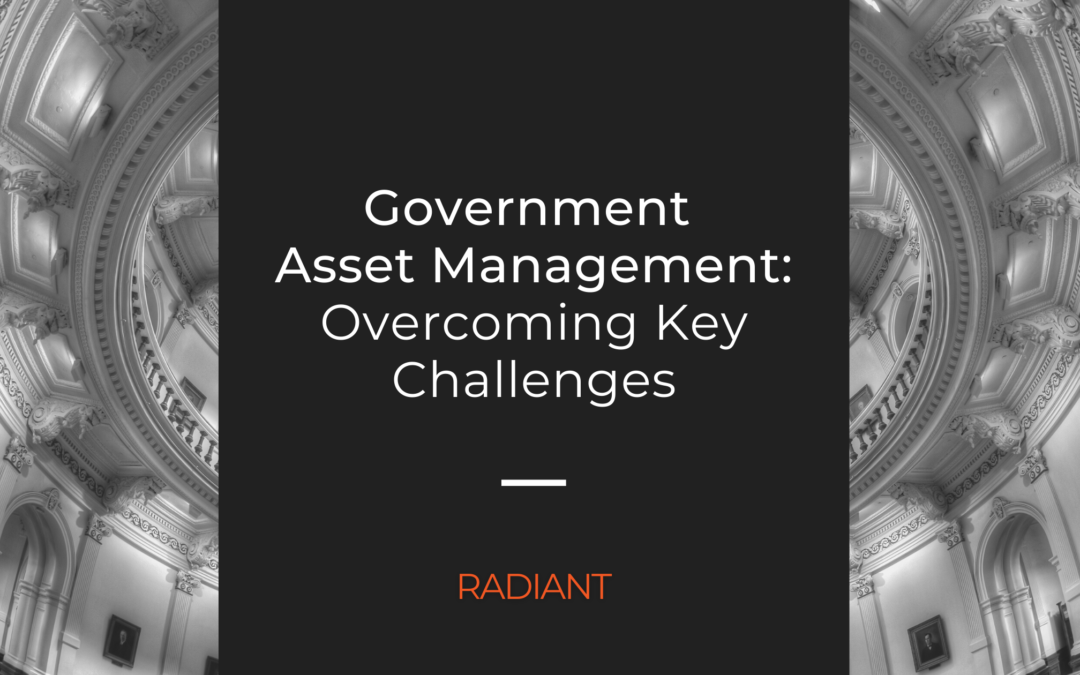An often overlooked but highly important function of government is to protect and manage its assets. These assets can take many forms, from natural resources and infrastructure to digital and capital assets. In order to make the most of these assets, government leaders need to understand the principles of asset management.
Asset Management for Governments
Asset management is the process of identifying, acquiring, developing, and maintaining assets in a way that meets the needs of the present while also preserving value for future generations. When applied to government assets, this process can help ensure that essential services are maintained, that taxpayer money is spent wisely, and that long-term planning takes into account the needs of future citizens.
In short, government asset management is a vital tool for leaders who want to steward their resources effectively. However, there are a number of challenges that government entities face when it comes to managing assets that only an effective asset management solution can help to overcome.
Challenge 1: Size & Scope of Government Operations
Government asset management is a complex and critical task, made all the more daunting by the sheer size and scope of government operations. With so many assets to manage, it can be difficult to maintain an accurate asset record and ensure that it is being used effectively.
An effective asset management solution can help overcome this challenge by providing a comprehensive view of government assets, and by automating many of the tasks associated with asset management. By automating asset tracking, maintenance, and reporting, a government asset management system can help to improve efficiency and decision-making, while also reducing costs.
In addition, effective asset management software can help government agencies to better understand and manage the risks associated with their assets. By providing a complete picture of government assets, an asset management system can help government agencies to protect the public interest and safeguard taxpayer dollars.
Challenge 2: Balancing Short-Term Needs & Long-Term Planning
Another challenge of asset management for governments is the need to balance short-term needs with long-term planning. Government entities often have to make decisions about how to allocate resources in the present that will have implications for years to come.
An effective asset management software must therefore be able to provide the government with visibility into all of its assets so that it can make informed decisions about their use. In addition, the solution must be flexible enough to adapt to changes in government policy or budget.
By using an effective asset management system, governments can overcome the challenge of balancing short-term needs with long-term planning. This will help them to make the most efficient use of their assets and ensure that they are able to meet their long-term goals.
Challenge 3: Shared Assets Across Government Entities
Finally, government asset management is also complicated by the fact that many assets are shared among different agencies or across federal, state, and local governments. This can complicate the management of these assets, as each agency may have its own policies and procedures.
An effective asset management software can help local, federal, and state governments overcome this challenge by providing a centralized platform for managing all government assets. This platform can be used to track the location and status of assets, as well as to coordinate the preventative maintenance and repair of these assets.
In addition, the asset management solution can provide government entities with real-time updates on the condition of their assets, allowing for more effective decision-making. By using an asset management system, the government can more effectively manage its assets, regardless of where they are located or who is responsible for them.
Features of an Effective Government Asset Management Solution
Asset management solutions can help government leaders make better decisions, increase efficiency, and improve asset utilization. However, it is important to look for a few key features when selecting an effective government asset management system.
One of the most important factors to consider is whether the solution is compatible with existing government systems. The solution should be able to interface seamlessly with government databases and accounting systems.
Another important feature is the level of customization and flexibility offered by the solution. Governments have unique asset management needs, so it is important to select a solution that can be tailored to fit those needs.
Additionally, the software should be easy to use and provide robust reporting features. Government asset managers need to be able to track and report on asset location, condition, and value.
By considering all of these factors, government officials can select an asset management solution that will meet their specific needs.
Getting Started with Asset Management for Government
Asset management for government can be a complex process, but with the help of the right tools, it doesn’t have to be. In this post, we’ve outlined some of the key challenges faced by those in charge of managing government assets and highlighted some features you should look for in an effective asset management system.
If you’re ready to explore our solutions and contact us, please don’t hesitate to get in touch. We would be happy to answer any questions you may have and help you find the perfect asset management solution for your needs.
Last Updated on January 26, 2023 by Radiant

